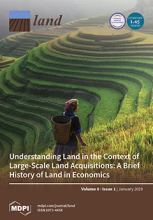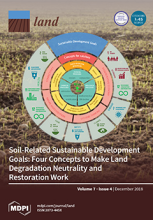Land Library
Welcome to the Land Portal Library. Explore our vast collection of open-access resources (over 74,000) including reports, journal articles, research papers, peer-reviewed publications, legal documents, videos and much more.
/ library resources
Showing items 19 through 27 of 37.Biochar is one of the most affordable negative emission technologies (NET) at hand for future large-scale deployment of carbon dioxide removal (CDR), which is typically found essential to stabilizing global temperature rise at relatively low levels.
Recent conflict along the border of Bangladesh and Myanmar has amplified a food security crisis and access to the region remains challenging.
Smallholders worldwide continue to experience processes of displacement from their lands under neoliberal political-economic governance.
Ecosystem services (ESs) are increasingly being used by many countries around the world as a framework for addressing the United Nations (UN) Sustainable Development Goals (SDGs).
The evaluation of resource and environmental carrying capacity (RECC) is the foundation for the rationale behind the arrangement of land spaces for production, living, and ecological uses.
While food and nutrition security are issues that national and international organizations are tackling, one of the central problems often overlooked is the essential role of soils in providing nutritious food. Soils are the base for food production and food security.
Outmigration has become a key livelihood strategy for an increasing number of rural households, which in turn has a profound effect on land management.
Urban agriculture is said to be increasing with global urbanization. However, there is little examination of the temporal or spatial dynamics of urban agriculture.
Soil databases are very important for assessing ecosystem services at different administrative levels (e.g., state, region etc.).







